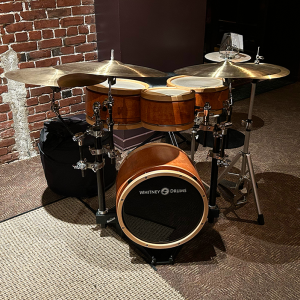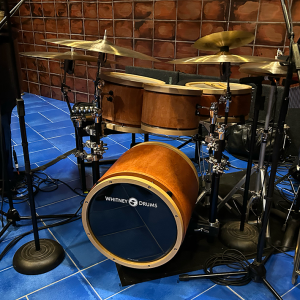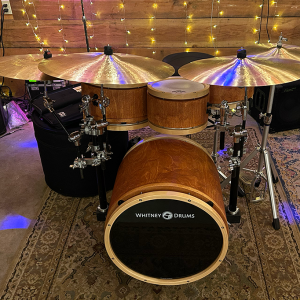Kurt Deutscher plays Whitney Drums
click/touch images to enlarge
After three and a half decades of schlepping drum gear to thousands of performances, I set out on a quest for a lighter weight drum set. My body isn’t going to get any younger, and a lighter-weight kit will likely extend the number of years I can keep performing. After considering a lot of lighter-weight options, my search ended with Whitney Drums and I couldn’t be happier.
Whitney Drums doesn’t endorse musicians, and this isn’t some thinly veiled sales pitch. These are the thoughts and observations of a working musician about the instrument that gives voice to his ideas.
The inspiring design of this instrument truly stands out. I’ve yet to have a performance when someone doesn’t walk right up to me and ask questions about my kit; sometimes while the band is still playing. The design is unusual and highly refined and communicates simplicity and craftsmanship. Everyone notices the look of these drums, and for good reason. This is a very different instrument created with an unconventional approach to engineering a drum set.
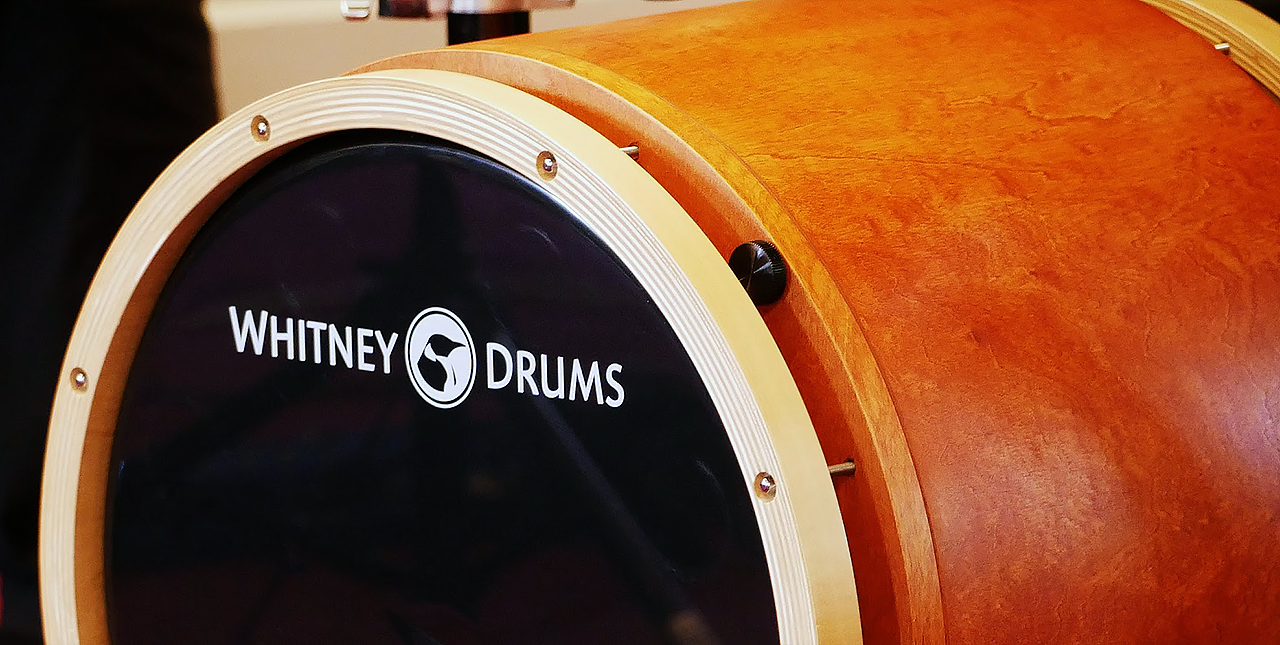
This section of my website was written for a couple of reasons. One is that I get so many questions about my Whitney Drums on gigs that I need a place to send people online that will enhance the short conversations I have with them when I’m on the bandstand. The second was I wanted to share some of my personal experiences and observations as a working drummer who plays (and schleps) this instrument hundreds of times a year.
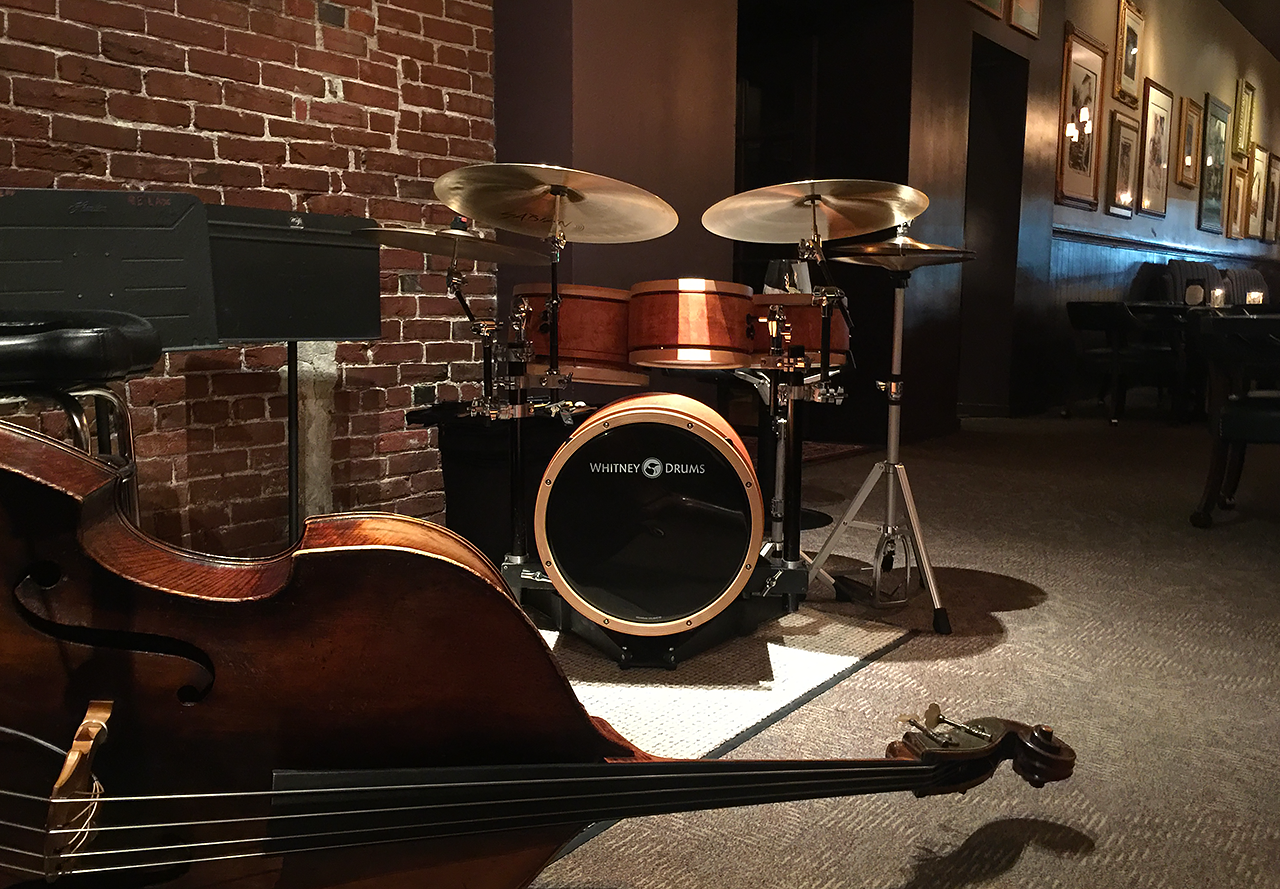
I received my first Whitney kit in the summer of 2017 and enjoyed playing it so much that I ordered a second Whitney drum set with a larger bass drum and toms in the fall of 2020. Three years later, I ordered drums for a third kit, so I currently have a tenor, alto, and soprano drum kit.
I use the smaller “soprano” kit for acoustic jazz gigs and any music in tiny rooms, and/or spaces with really challenging acoustics. The “alto” kit has deeper drums that are tensioned/tuned to for a more contemporary sound to pair well with amplified bands and for some of the 12-piece bands I play in. The largest “tenor” kit is for big bands, cover bands, and larger venues, or when I need some lower notes on my kit for the gig. This lets me have different-sounding kits set up and ready to go for anything I’m hired for while allowing me to practice on a kit that’s tuned/tensioned for the style of music I’m working on.
All three kits have the nutmeg finish and are positioned/set up nearly identically to each other, so I have a consistent ergonomic playing experience and a consistent brand on stage.
*All three kits are pictured above.
